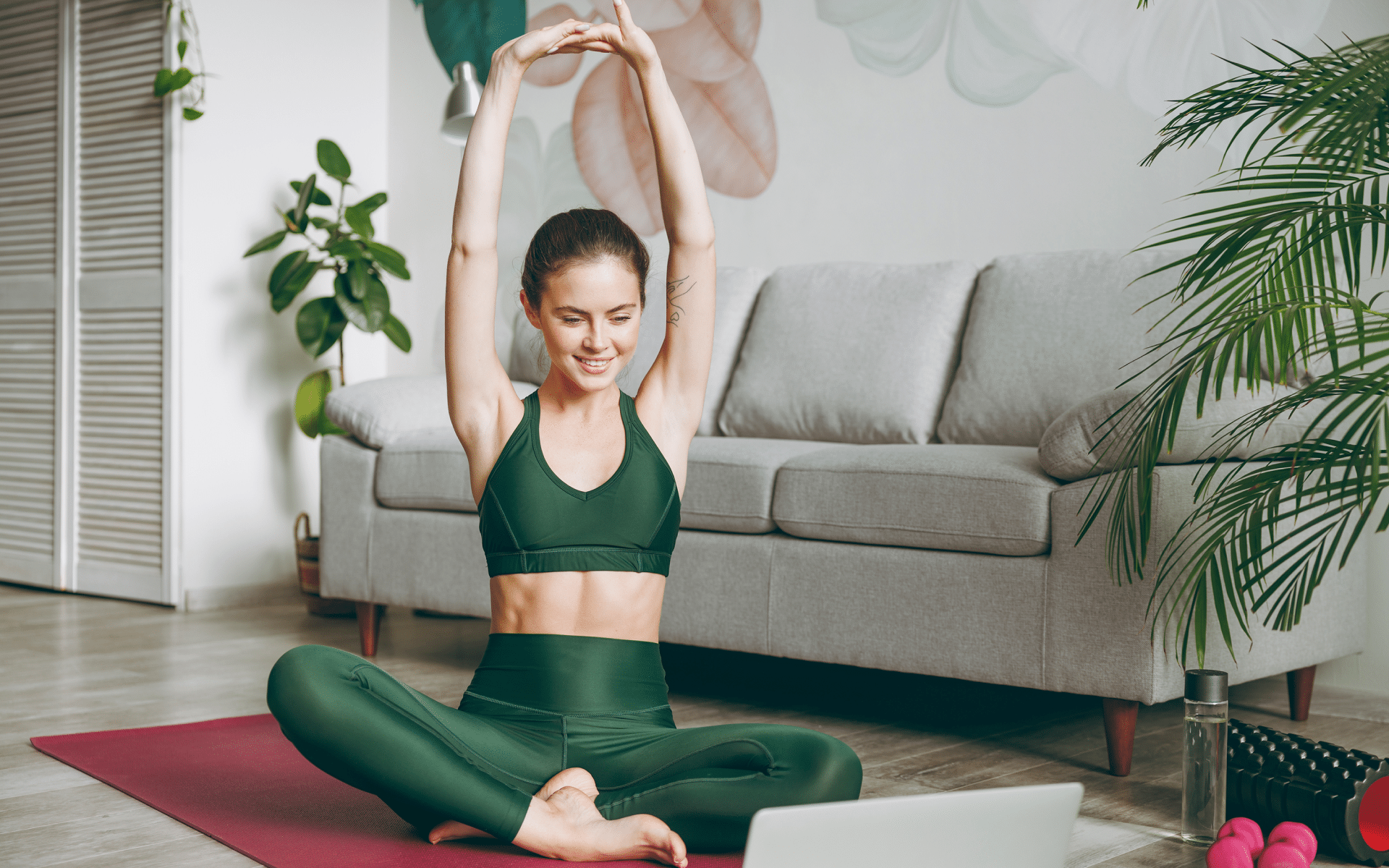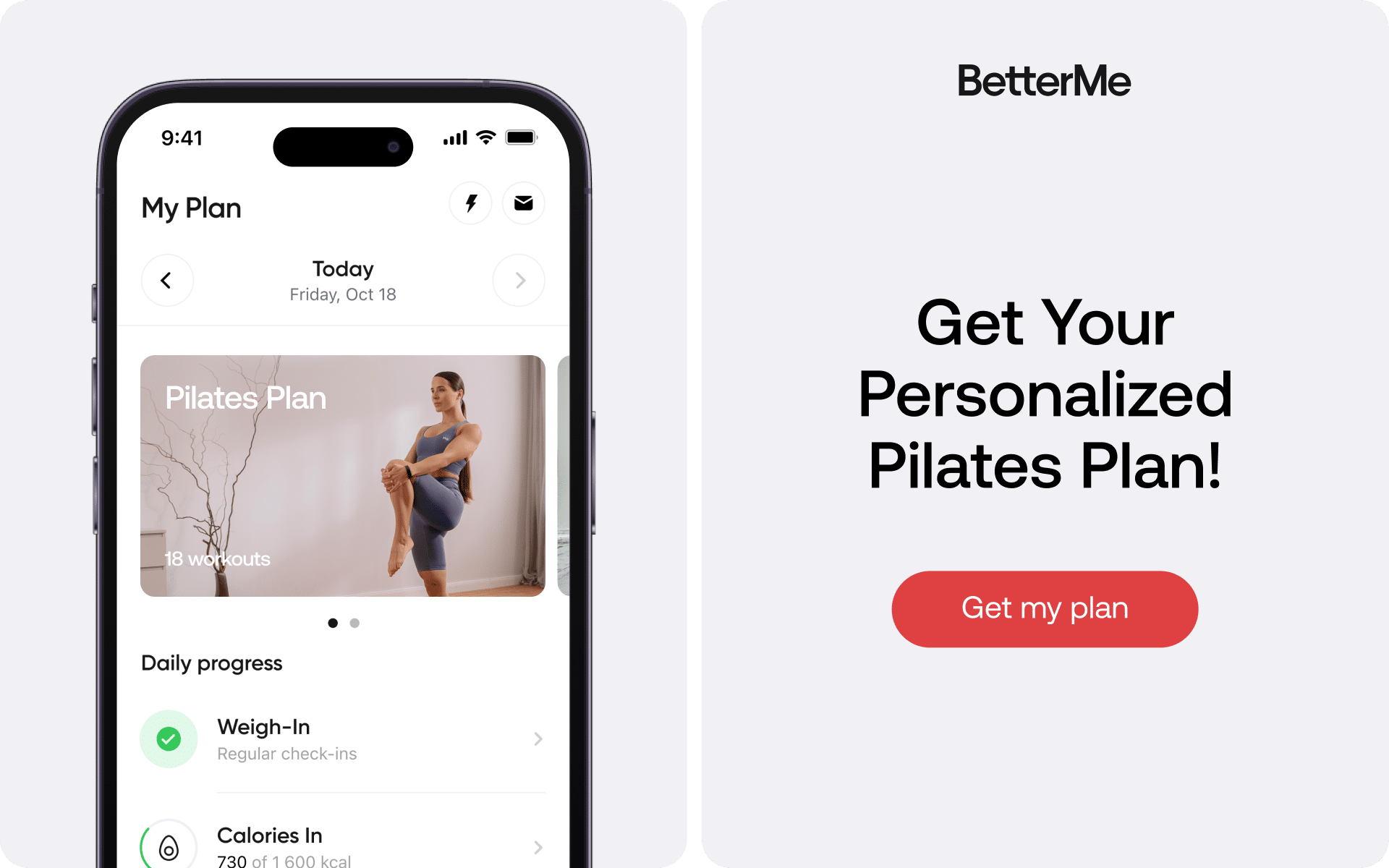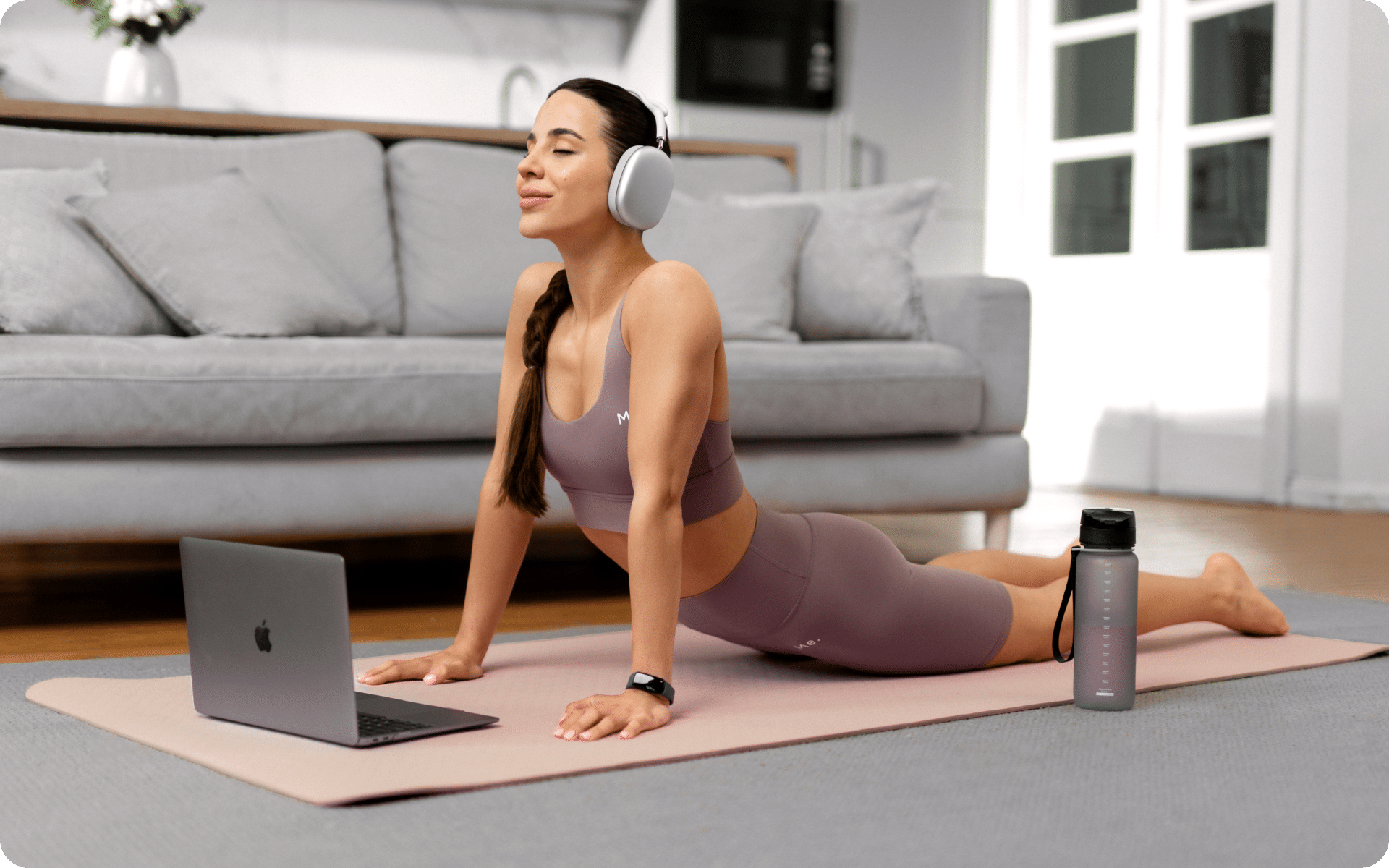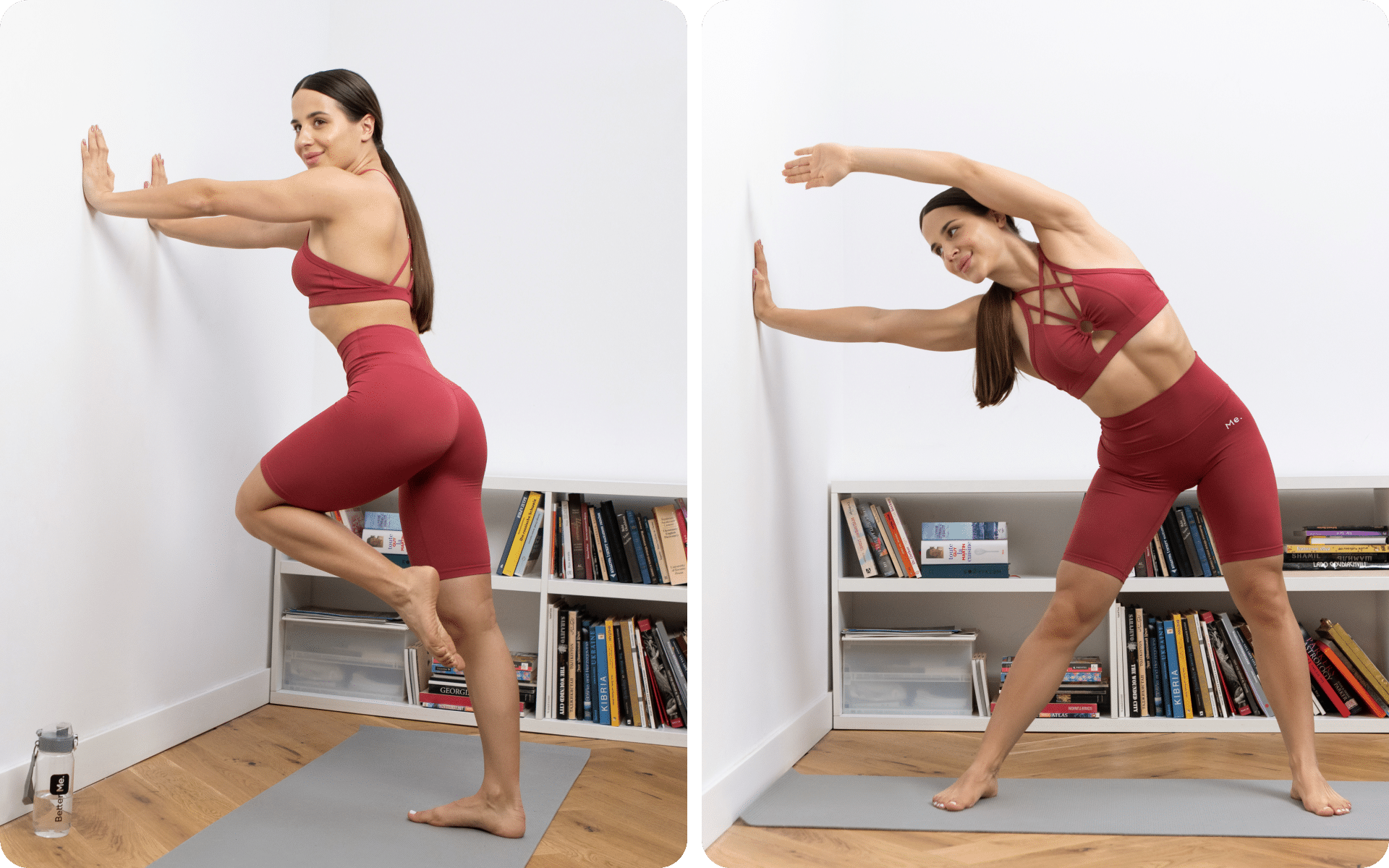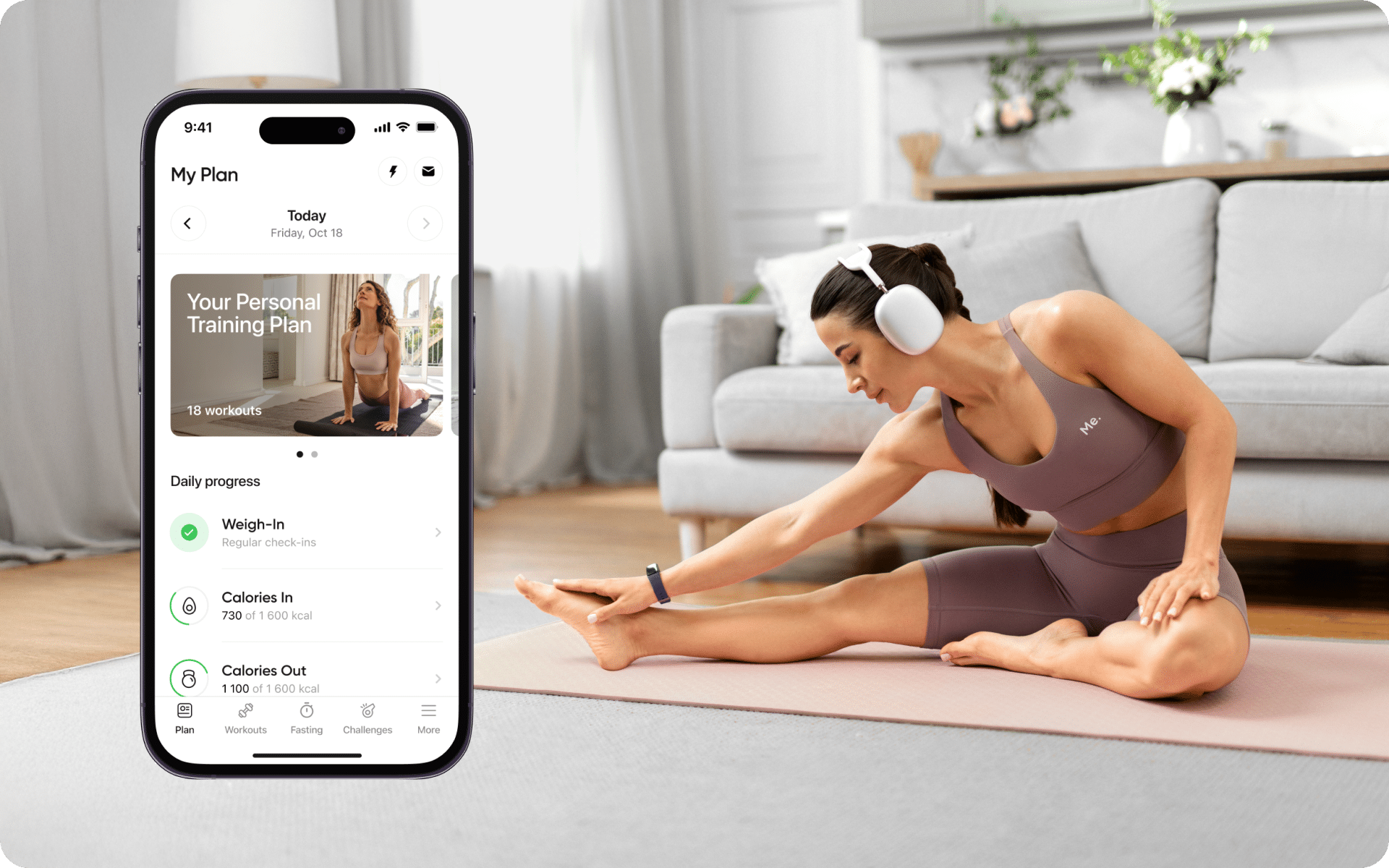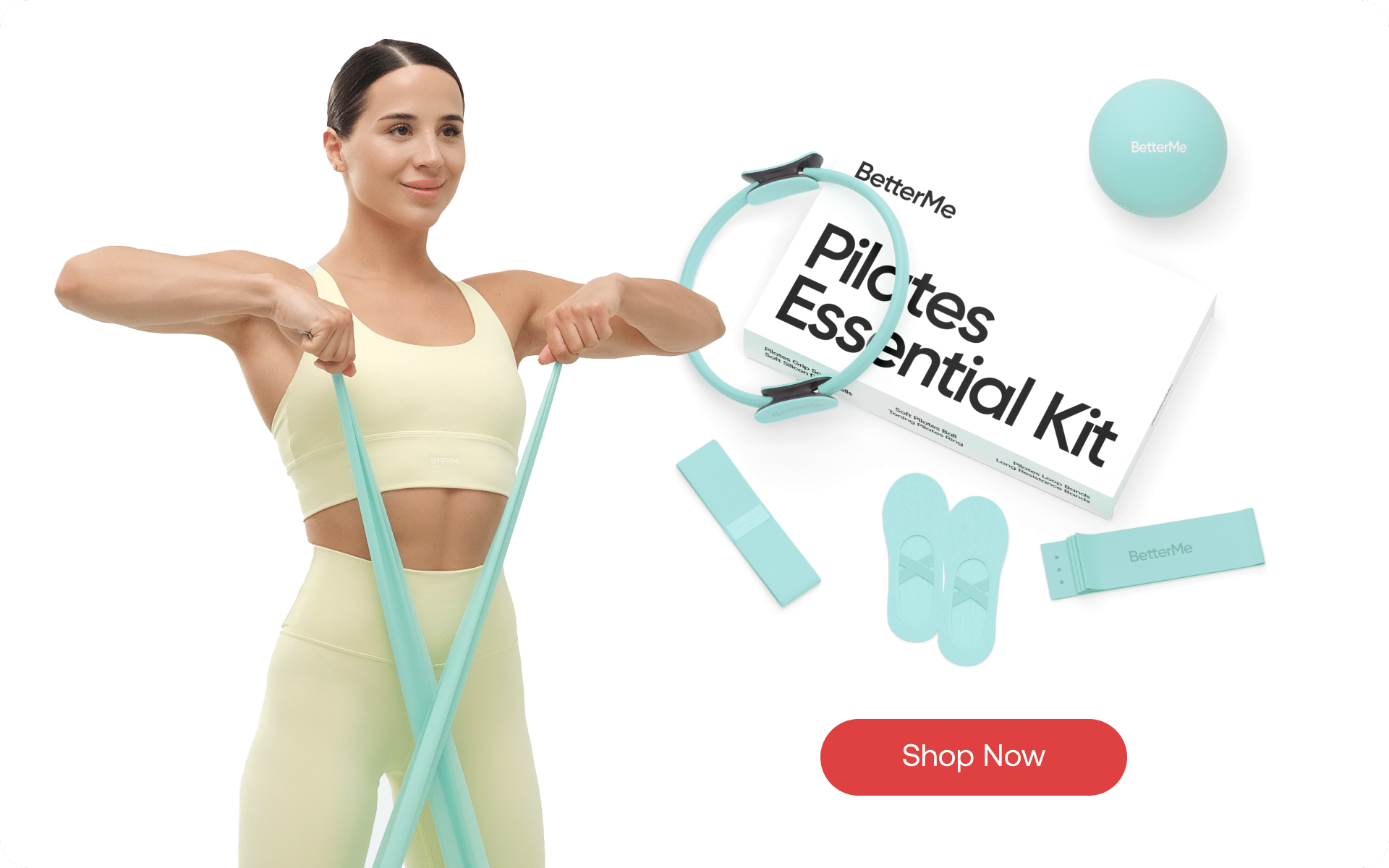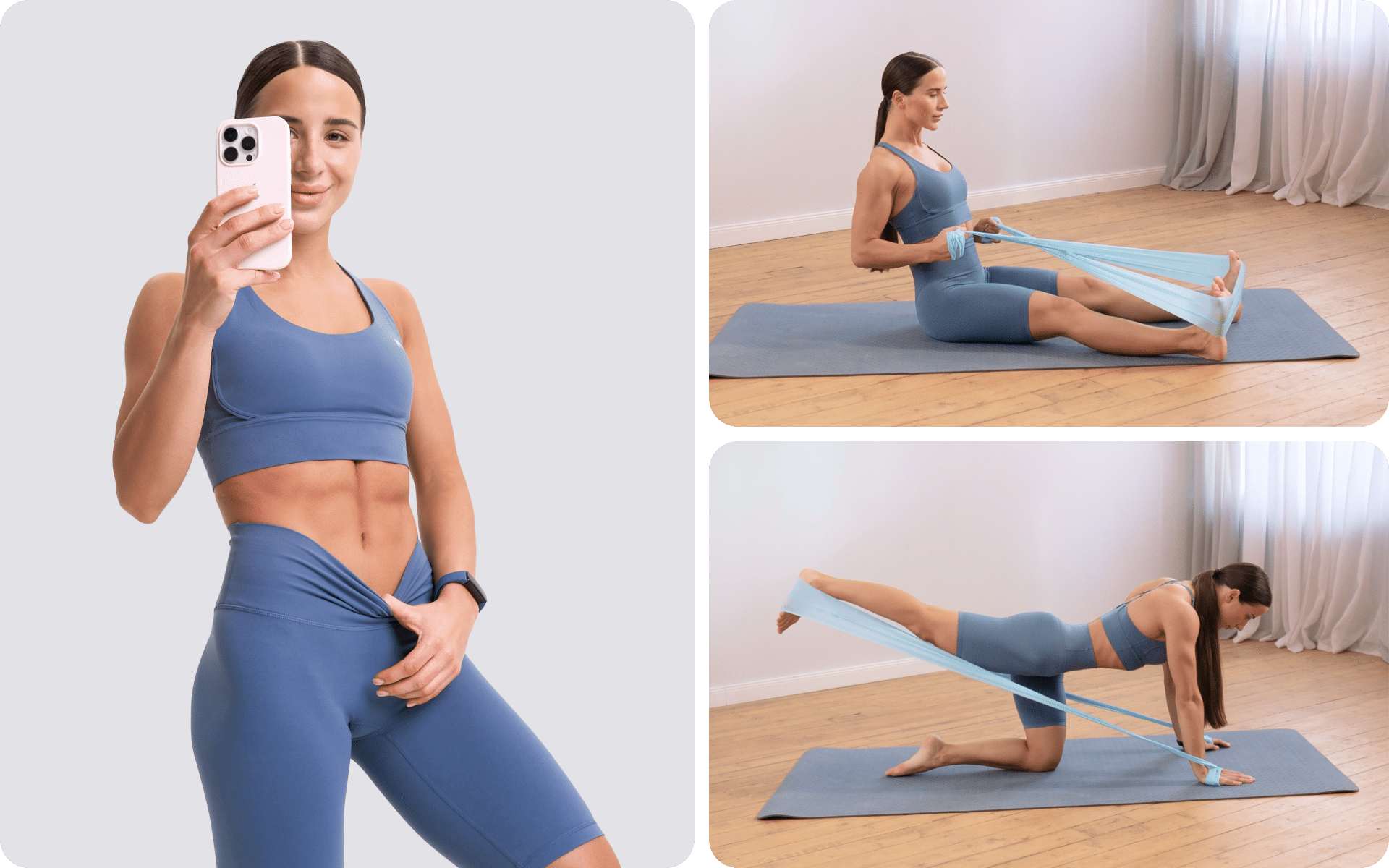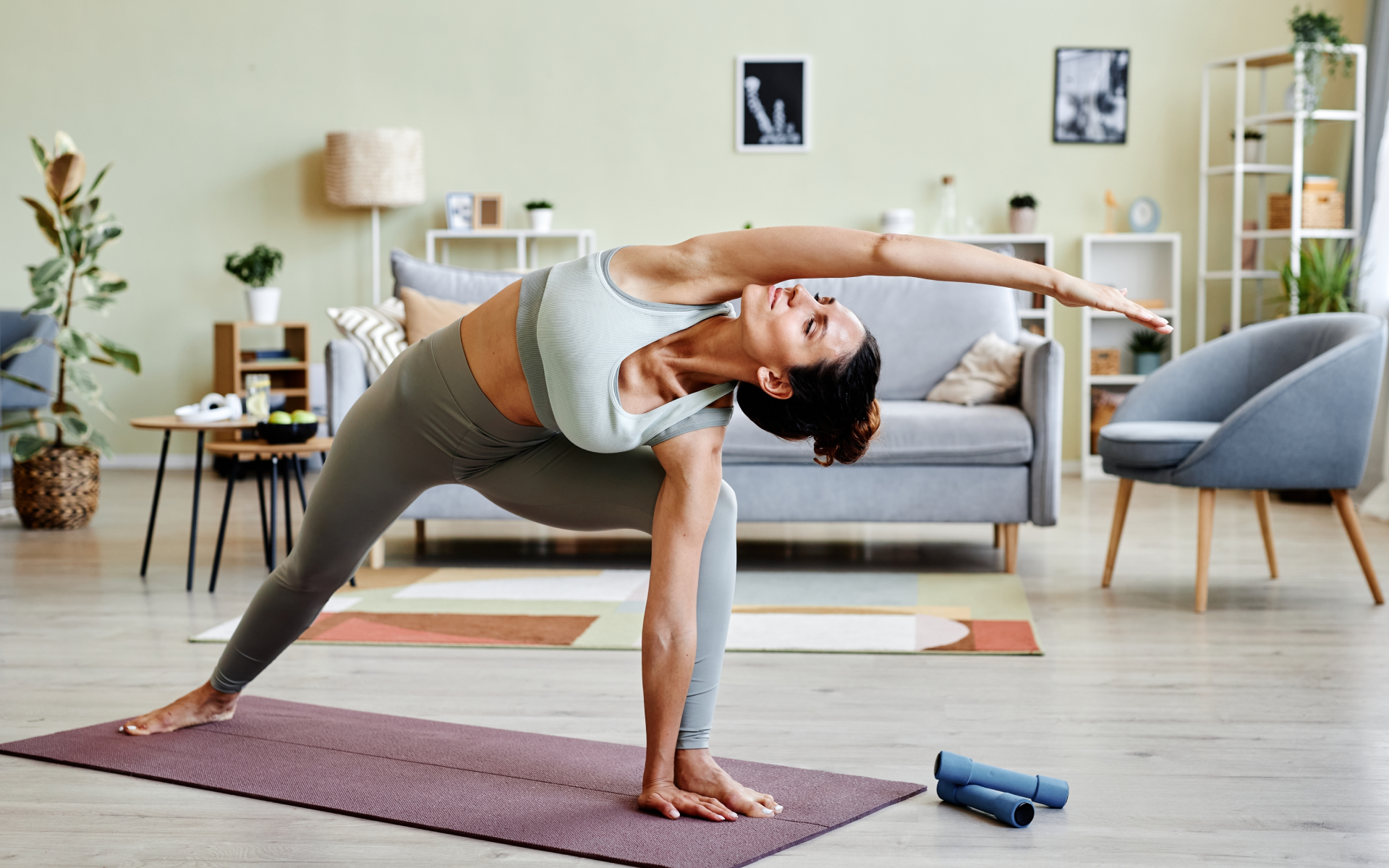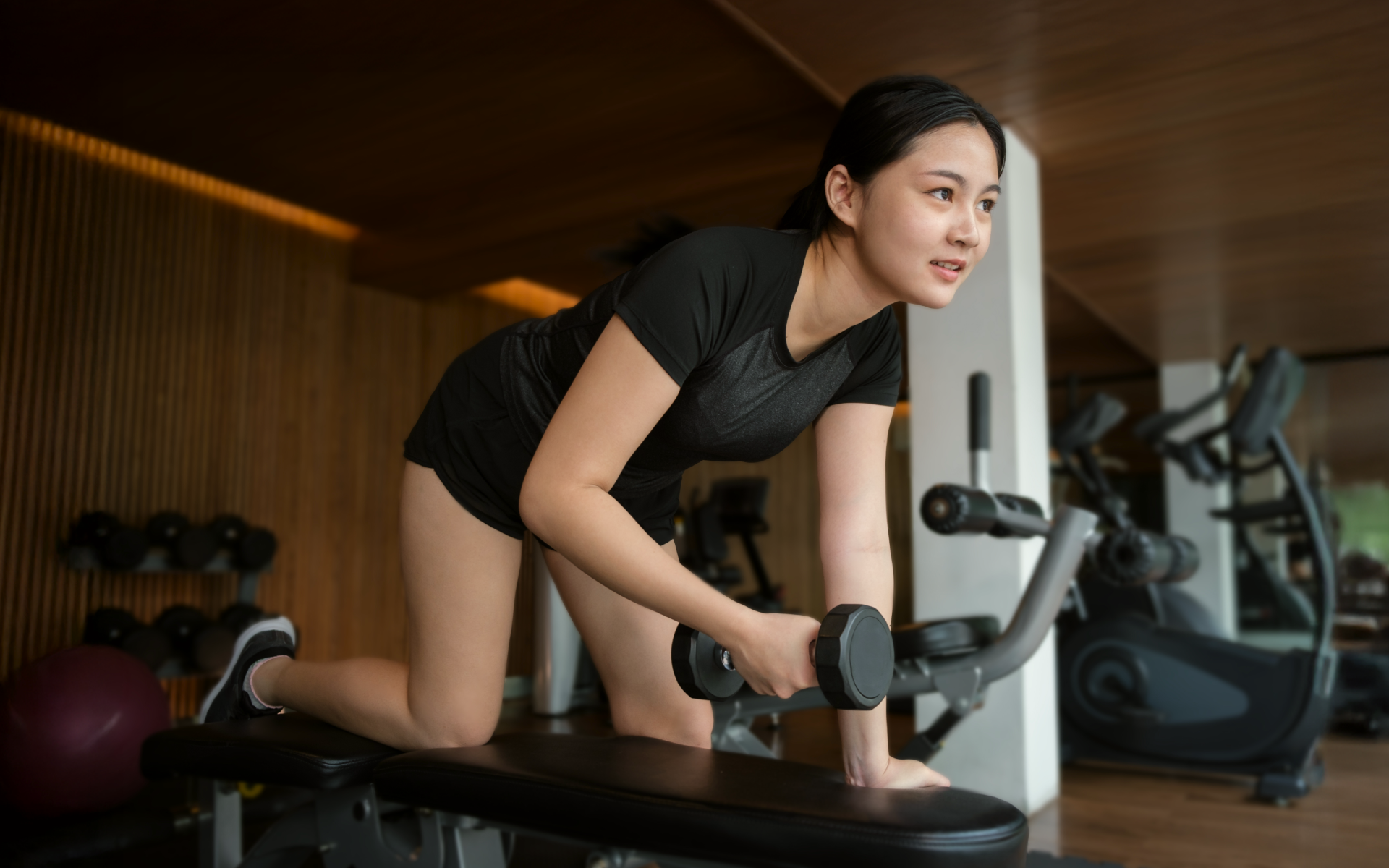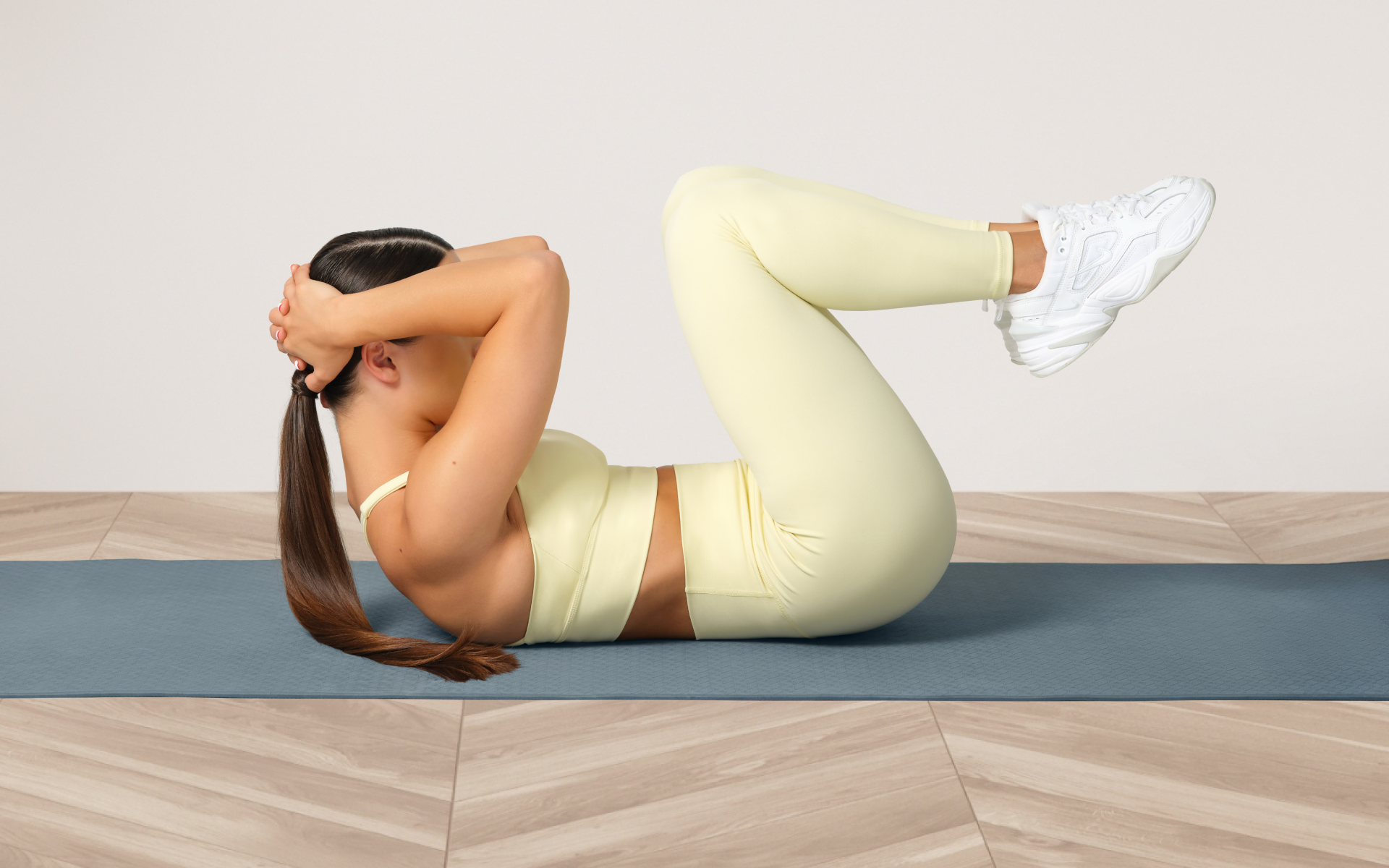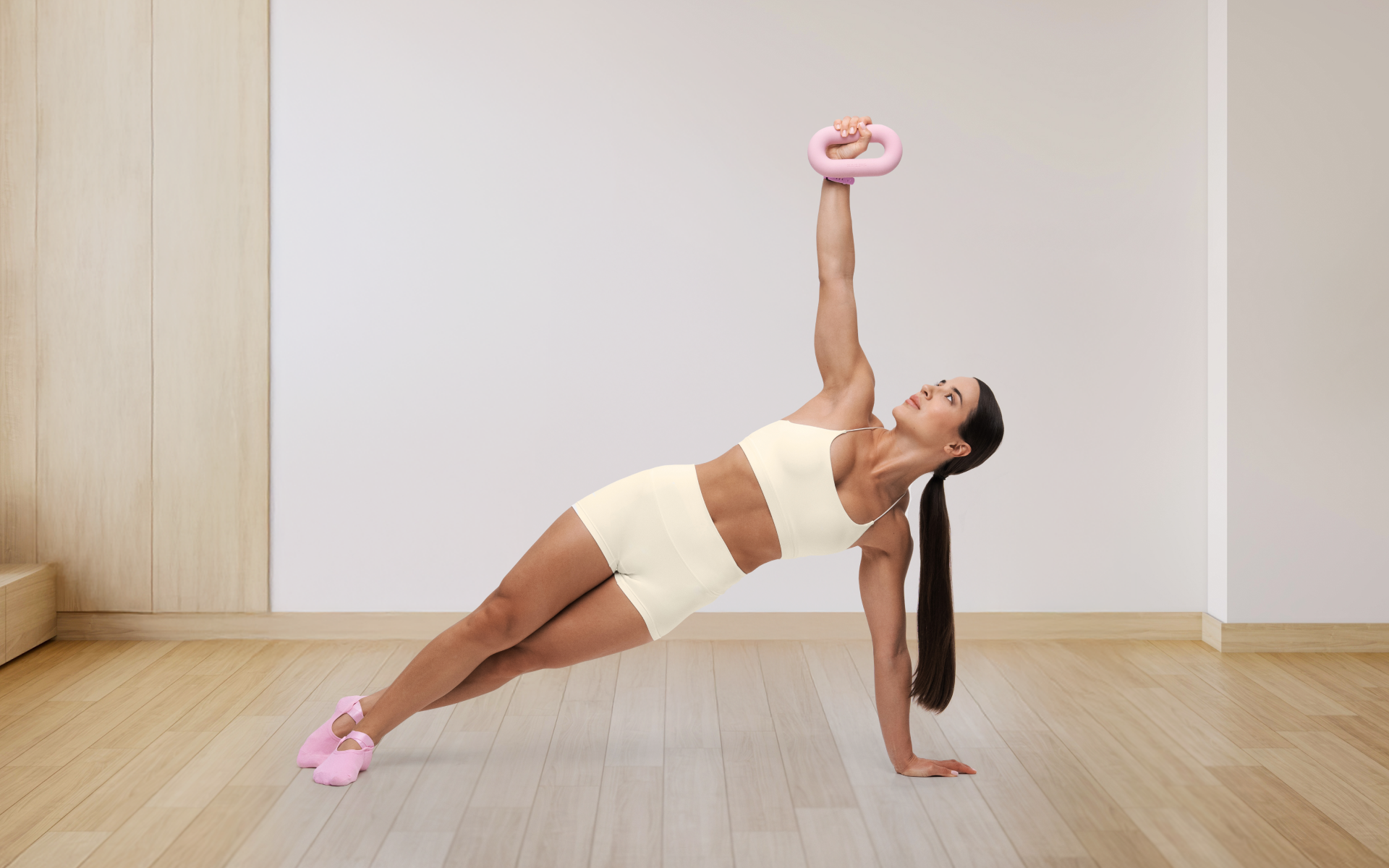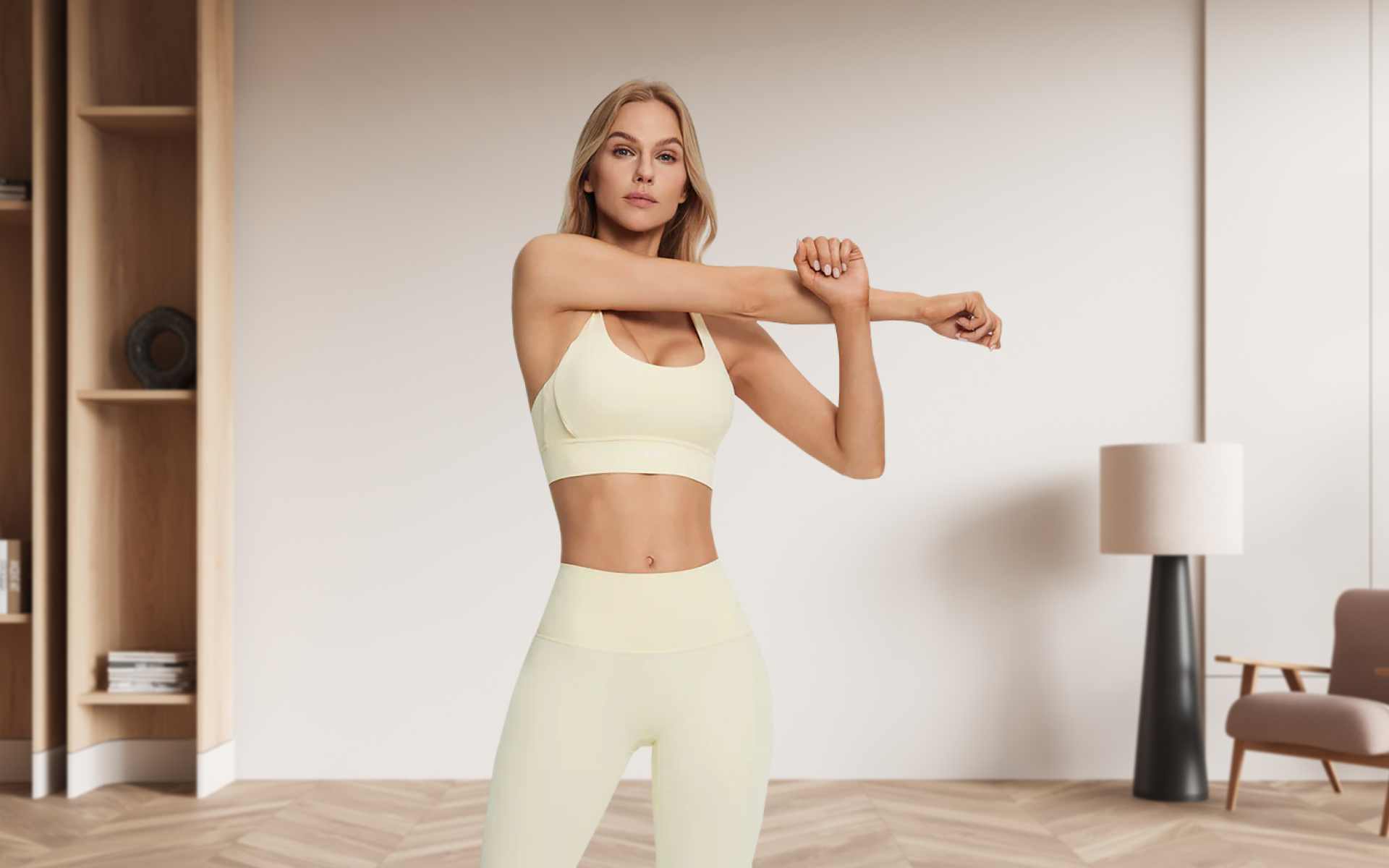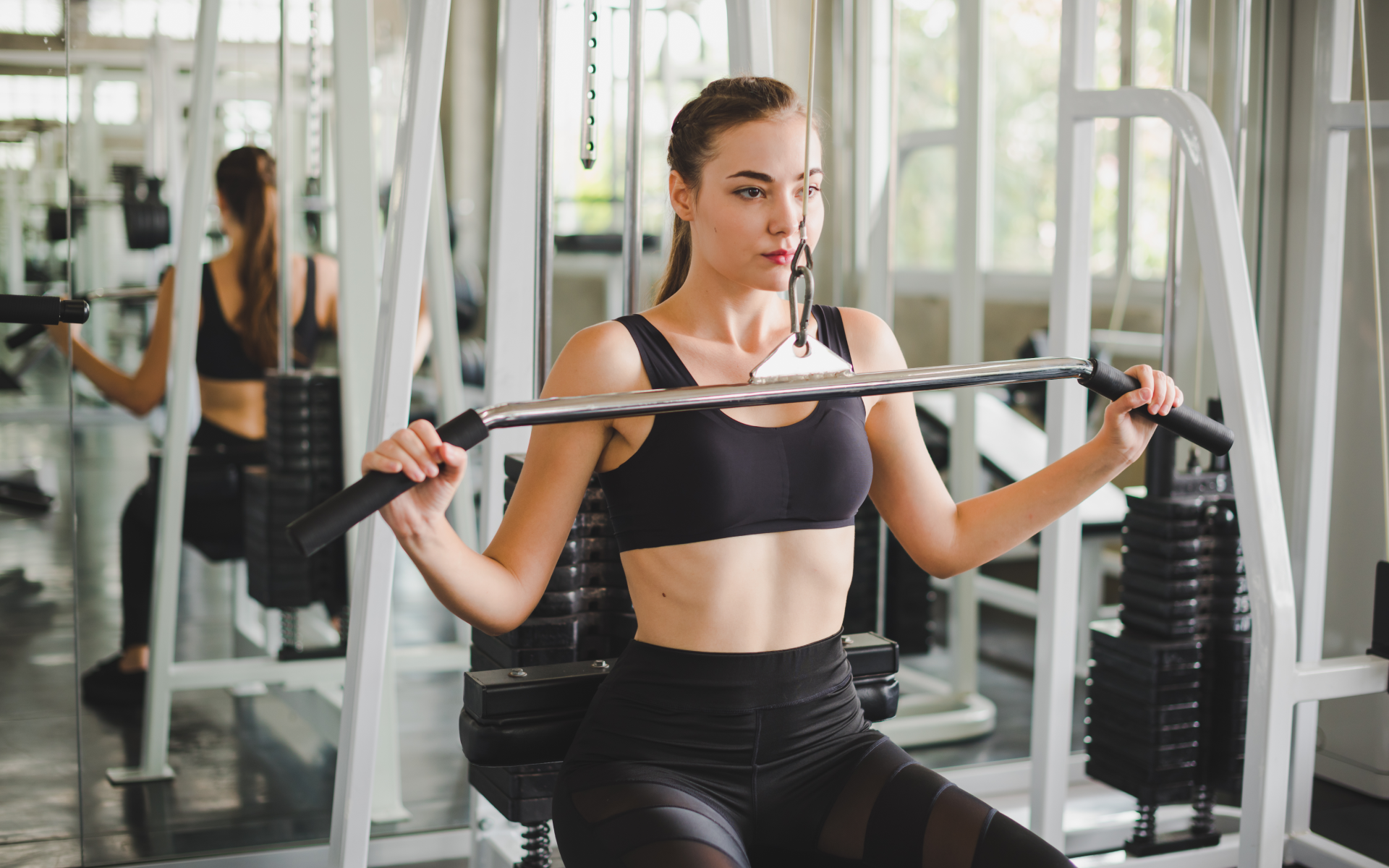When you have good posture, your bones are correctly aligned, your muscles can work efficiently, and your joints are protected from undue stress. Good posture also helps you breathe deeply and efficiently. Poor posture, on the other hand, can lead to muscle strain, joint pain, and decreased mobility (10). Can Pilates fix bad posture? The simple answer is yes. One of the main goals of Pilates is to increase efficiency and coordination of movement. Its focus is on learning how to move from your “powerhouse” or center. The powerhouse is the area between the navel and pubic bone, and it houses the major muscles of the body’s core (9). Learning how to use core strength has positive effects on the entire body, particularly the spine and posture.
What Are The Benefits Of Pilates For Posture Correction?
There are several aspects of Pilates that make it ideal for correcting posture and alignment.
Encouraging A Good Length-Tension Relationship In The Muscles
Each of your body’s muscles require an optimum length to produce the most force. When a muscle is too short or too long, it can’t work as efficiently. This is known as the length-tension relationship.
The length-tension relationship for postural muscles is often out of balance because of the way we spend our time.
For example, if you have a desk job and sit for long periods, your hip flexor muscles (which attach to the front of the pelvis) can become shortened. This can lead to an anterior pelvic tilt, where your pelvis tilts forward and your lower back rounds.
The forward head posture is also another example. With forward head posture, there is anterior positioning of the cervical spine which often results in muscle imbalance, pain, and limited motion.
Pilates can help to correct this imbalance by lengthening the shortened muscles and strengthening the weakened muscles (4). This leads to improved posture and alignment.
Enhancing Spinal Stability
A key element of good posture is a stable spine. The spine is made up of 33 vertebrae, and between each vertebra is a disc that acts as a shock absorber. The discs are cushioned by small pads of cartilage, called facet joints (2).
The muscles and ligaments around the spine provide support and stability. When these muscles are weak or imbalanced, it can lead to spinal instability and poor posture.
Pilates exercises help to strengthen the muscles around the spine, providing support and stability (5). This can help to improve posture and alignment.
Read More: What Is Pilates Workout?
Enhancing Joint Flexibility
Habitual posture and movement patterns can lead to tightness in the joints. This can limit your range of motion and make it difficult to maintain good posture.
Pilates exercises help to improve joint flexibility, making it easier to maintain good posture (11).
Strengthening The Deep Abdominal Muscles
The deep abdominal muscles, including the transverse abdominis and the pelvic floor muscles, play an important role in spinal stability. These muscles help to support the spine and pelvis, and they can be weakened by poor posture or pregnancy (1).
Pilates exercises help to strengthen the deep abdominal muscles, providing support for the spine and pelvis (7) (8). This can help to improve posture and alignment.
Reinforcing Efficient Movement Patterns
Poor posture often develops from inefficient movement patterns. Pilates exercises help to retrain the body to move in a more efficient and coordinated way.
For example, the controlled movement of Pilates exercises can help to retrain the muscles of the neck and shoulders, improving posture.
Opposing extension exercises that involve many muscle groups working together can help to retrain the muscles of the spine, pelvis, and hips, improving posture.
Decrease Or Slow Down Deformity Progression
Some types of posture problems, such as kyphosis (the rounding of the upper back) or lordosis (the rounding of the lower back), can lead to deformity if they are not corrected.
By improving posture and alignment, Pilates can help to decrease or slow down the progression of these deformities (6).
What Are The Best Pilates Exercises For Posture?
Pilates exercises are classified into three categories: matwork exercises, reformer exercises, and Cadillac exercises. All three types of exercises can help to improve posture.
Matwork exercises are the simplest type of Pilates exercise and can be done without any equipment. These exercises are typically done on a mat on the floor.
Reformer exercises are done on a moving platform called a reformer. The reformer provides resistance that can help to challenge and tone the muscles.
Cadillac exercises are done on a large, fixed platform called a Cadillac. The Cadillac provides stability and support, making it an ideal choice for people with injuries or balance problems.
The following Pilates exercises can help to improve posture:
The Hundred
This matwork exercise helps to strengthen the abdominal muscles and improve spinal stability. While performing this exercise, it is important to maintain good posture by keeping the spine in a neutral position.
- Start with your legs in a tabletop position and your arms by your sides. Your knees should be bent to 90 degrees and your hips should be in line with your knees.
- Exhale as you lift your head, neck, and shoulders off the mat. Inhale as you reach your arms forward, keeping them parallel to the floor.
- Exhale as you pump your arms up and down, counting to 100.
- Keep your abs engaged and breathe deeply throughout the exercise.
BetterMe app is a foolproof way to go from zero to a weight loss hero in a safe and sustainable way! What are you waiting for? Start transforming your body now!
Pilates Scissor
This matwork exercise helps to improve hip and spine flexibility. While performing this exercise, it is important to maintain good posture by keeping the spine in a neutral position.
- Start lying on your back with both legs in the air and your head and shoulders off the mat.
- Inhale as you lower your right leg toward the floor. Exhale as you lift your left leg toward the ceiling, keeping your abs engaged.
- Inhale as you switch legs, exhaling as you lower your left leg toward the floor and lift your right leg toward the ceiling.
- Continue alternating legs for 10-20 repetitions.
The Saw
If you can’t perform traditional abdominal exercises due to pain or discomfort, this Pilates exercise is a good alternative. The Saw helps to strengthen the abdominal muscles without putting pressure on the spine.
- Start sitting on your mat with your legs extended in front of you and your arms by your sides.
- Spread out your legs to shoulder-width apart and point your toes.
- Twist your torso to the right and reach your left hand toward your right foot. Pulse your arms up and down for 10-20 repetitions.
- Switch sides and repeat on the left side.
Pilates Roll-Up
This matwork exercise helps to improve spinal flexibility. It’s a playful exercise that can be done at your own pace.
- Start lying on your back with your legs extended in front of you and your arms by your sides.
- Pull your legs to your chest, keeping your elbows out to the side and parallel to the ground.
- Use your feet to push yourself backward and roll onto your shoulders.
- Pause in this position and take a deep breath. Exhale as you roll back up to the starting position.
- Repeat for 10-12 repetitions.
The Mermaid
The sides of your waistline, known as the obliques, can be challenging to target with traditional exercises. This matwork exercise helps to strengthen the obliques without putting pressure on the spine.
- Start sitting on your right hip, with your legs folded together on your left like a mermaid tail.
- Extend your right arm over your head and lean your torso to the left. Inhale as you come back to the starting position.
- Exhale as you lean to the right, using your obliques to help you twist. Inhale as you come back to the starting position.
- Repeat for 10-12 repetitions on each side.
Pilates Swan
This matwork exercise helps to improve spinal flexibility and strengthen the muscles in the back. While performing this exercise, it is important to maintain good posture by keeping the spine in a neutral position.
- Start lying face down on your mat with your legs extended behind you and your arms by your sides.
- Inhale as you lift your head, neck, and chest off the mat. Exhale as you reach your arms back, keeping them parallel to the ground.
- Inhale as you lower your head, neck, and chest back to the starting position. Exhale as you reach your arms back up, keeping them parallel to the ground.
- Repeat for 10-12 repetitions.
Read More: Is Pilates Good For Weight Loss? Why You Should Make This Practice Part Of Your Exercise Routine
Pilates Bridge
This matwork exercise helps to improve spinal flexibility and strengthens the lower body muscles. You’ll engage your glutes, hamstrings, and core muscles while performing this exercise.
- Start lying on your back with your feet flat on the ground and your arms by your sides.
- Press down into your heels to lift your hips off the ground, keeping your knees in line with your ankles.
- Engage your glutes and hamstrings to lift your hips even higher, until your thighs and torso are in line with each other.
- Hold this position for a few breaths before slowly lowering your hips back down to the starting position.
- Repeat for 10-12 repetitions.
Plank
This is a great exercise to help improve your posture and strengthen your core muscles. It’s important to keep your body in a straight line while performing this exercise, from your head to your heels.
- Start in a push-up position, with your hands shoulder-width apart and your feet hip-width apart.
- Engage your core muscles and straighten your body, from your head to your heels.
- Hold this position for 30-60 seconds. You can modify this exercise by dropping down to your knees.
Superman
The superman is a chest opener exercise that helps to improve posture by strengthening the muscles in your back. It’s important to keep your head and neck in alignment while performing this exercise.
- Start lying face down on your mat with your arms extended in front of you and your legs extended behind you.
- Engage your core muscles and lift your head, chest, and legs off the ground.
- Hold this position for a few counts before slowly lowering back down to the starting position.
- Repeat for 10-12 repetitions.
Resistance Band Rowing
The resistance band is a great tool to use for a full-body workout. You can use it to strengthen your back muscles, which can help improve your posture.
- Start sitting on your mat with your legs extended in front of you and your arms by your sides.
- Wrap the resistance band around your feet and hold onto the ends with your hands.
- Inhale as you lean back, keeping your core engaged. Exhale as you row the resistance band toward your chest, using your back muscles to pull. Your elbows should be close to your body, not flared out.
- Inhale as you lower the resistance band back to the starting position. Repeat for 10-12 repetitions.
Intense sweat sessions, working weight loss tips, lip-smacking recipes come in one package with the BetterMe app. And all of it is at your fingertips, start transforming your life now!
How Long Does It Take To Correct Posture With Pilates?
Posture correction takes time and consistency. It is important to adhere to a regular Pilates practice to see results. For some people, it may take a few weeks to start seeing changes in their posture. For others, it could take months or even longer.
The key is to be patient and consistent with your practice. As your muscles get stronger and your posture improves, you will start to see and feel the differences.
There are other things you can do outside of Pilates to help improve your posture faster. They include:
- Using ergonomic furniture: If you spend a lot of time sitting at a desk, make sure you have ergonomic furniture that supports your back and keeps your spine in alignment.
- Wearing supportive shoes: Shoes with high heels can contribute to poor posture. Instead, opt for flats or low-heeled shoes.
- Exercising regularly: In addition to practicing Pilates, make sure you are getting regular exercise. This will help to strengthen your muscles and improve your overall posture.
- Practicing good posture: Throughout the day, be mindful of your posture. Make sure you are sitting up straight, standing tall, and avoiding slouching.
- Chiropractic adjustments: If you have any misalignments in your spine, it can contribute to poor posture. Seeing a chiropractor for regular adjustments can help to correct these misalignments and improve your posture (3).
All these things can help speed up the process of correcting your posture. However, the most important thing is to be consistent with your Pilates practice. If you stick with it, you will see results!
The Bottom Line
Pilates is a great way to improve posture. By strengthening the muscles in your back and core, you can help to improve your posture and alleviate pain.
Be sure to talk to your doctor or physical therapist before starting any new exercise program. They can help you determine if Pilates is right for you and provide you with guidance on how to get started.
DISCLAIMER:
This article is intended for general informational purposes only and does not serve to address individual circumstances. It is not a substitute for professional advice or help and should not be relied on for making any kind of decision-making. Any action taken as a direct or indirect result of the information in this article is entirely at your own risk and is your sole responsibility.
BetterMe, its content staff, and its medical advisors accept no responsibility for inaccuracies, errors, misstatements, inconsistencies, or omissions and specifically disclaim any liability, loss or risk, personal, professional or otherwise, which may be incurred as a consequence, directly or indirectly, of the use and/or application of any content.
You should always seek the advice of your physician or other qualified health provider with any questions you may have regarding a medical condition or your specific situation. Never disregard professional medical advice or delay seeking it because of BetterMe content. If you suspect or think you may have a medical emergency, call your doctor.
SOURCES:
- Anatomy, Abdomen and Pelvis, Abdominal Wall (2021, ncbi.nlm.nih.gov)
- Anatomy, Back, Vertebral Column (2021, ncbi.nlm.nih.gov)
- Chiropractic adjustment (2022, mayoclinic.org)
- Clinical effectiveness of a Pilates treatment for forward head posture (2016, ncbi.nlm.nih.gov)
- Does pilates-based exercise improve postural alignment in adult women? (2013, pubmed.ncbi.nlm.nih.gov)
- Effectiveness of pilates method for the posture and flexibility of women with hyperkyphosis (2012, researchgate.net)
- Effect of mat pilates exercise on postural alignment and body composition of middle-aged women 2016, ncbi.nlm.nih.gov)
- EFFECTS OF PILATES ON CORE MUSCLE STRENGTH AND ENDURANCE IN POST 6 MONTHS DELIVERED WOMEN (2020, researchgate.net)
- Pilates (2011, ncbi.nlm.nih.gov)
- Posture (n.d., physio-pedia.com)
- The effects of Pilates training on flexibility and body composition: an observational study (2004, pubmed.ncbi.nlm.nih.gov)
